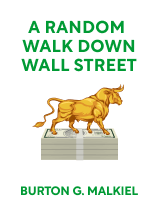

This article is an excerpt from the Shortform book guide to "A Random Walk Down Wall Street" by Burton G. Malkiel. Shortform has the world's best summaries and analyses of books you should be reading.
Like this article? Sign up for a free trial here .
What is firm-foundation theory? How is it different from castle-in-the-air theory? How do they differ and which is the best stock valuation method?
There are two primary stock valuation methods. Firm-foundation theory states that assets have an “intrinsic value” based on the value of current dividends and estimated potential in the future. The idea here is that the stock will always regress to the intrinsic value. The castle-in-the-air theory has a different approach, stating that a stock is worth what people are prepared to pay for it.
Keep reading for an in-depth look at firm-foundation theory and castle-in-the-air theory.
Firm-Foundation Theory and Castle-in-the-Air Theory
Before a novice investor can begin to make the right decisions about how to invest her money, she must know how stocks are valued. Traditionally, there are two primary theories of asset valuation: the firm-foundation theory and castle-in-the-air theory. (There’s a third—called “the new investment technology”—that Malkiel describes later in the book.)
Both theories, as we’ll see, are flawed, and Malkiel is skeptical of them both as a reliable source of returns (though, in the short run, either may produce better-than-market-average returns).
The Firm-Foundation Theory
Adherents of the firm-foundation theory argue that assets have an “intrinsic value” based on their present conditions and future potential. For example, if the asset being valued is a common stock, the firm-foundation theorist will calculate the stock’s intrinsic value by summing (1) the value of its present dividends and (2) the estimated growth of its dividends in the future.
Once an intrinsic value is established, the investor will make buying and selling decisions based on the difference between the actual price of the stock and the intrinsic value (because, according to the theory, the price will eventually regress to the intrinsic value). If the stock price is below the intrinsic value, the investor will buy more shares; if it’s above, she’ll sell.
Given its simplicity and logic, the firm-foundation theory has earned its share of proponents, among them Warren Buffett, one of the most successful investors of all time.
However, a major problem with the firm-foundation theory is its reliance on future estimates. No analyst can know for certain how much or how long a stock’s dividends will grow—or even if they’ll grow at all.
The Castle-in-the-Air Theory
Most closely associated with economist John Maynard Keynes, the castle-in-the-air theory of asset valuation states that an asset is only worth what someone else will pay for it. In other words, no asset has an “intrinsic value” that can be determined analytically or mathematically; rather, the value of an asset is purely psychological—it’s worth whatever the majority of investors think it’s worth. (The theory earns its name because investors will build “castles in the air” about certain assets, thereby juicing their value.)
Keynes’s understanding of the castle-in-the-air theory made him a fortune. His process was as follows: Because no one can know with any certainty the future revenues or dividends of a given stock, he invested based on what he thought other investors would value. For example, if he sensed there was prevailing optimism in a certain sector of the economy, say in steel production, he would invest in steel companies regardless of their underlying fundamentals, simply because he anticipated other investors would soon rush into steel.
The key to the castle-in-the-air theory is timing: The successful investor will buy an asset just before mass enthusiasm causes its price to rise and sell before that enthusiasm wanes. A less charitable name for the castle-in-the-air theory is the “greater fool” theory—the less attuned an investor is to the prevailing winds, the more likely she’ll end up owning a stock that’s worth far less than she paid for it.
Exercise: Examine Stock Valuation Methods
Consider the basic stock valuation methods—and valuations run amok—in light of your goals.
- What are the two primary stock valuation methods? Despite their shortcomings, which seems more useful to you and why?
- What are some current investment fads that you might be wary of? List two or three, and then, using Malkiel’s concepts, explain why they seem suspect to you.
- What strategies might you use to avoid getting caught up in a bubble? If you were affected by the dot-com or housing bubbles, you might draw on your experience here.

———End of Preview———
Like what you just read? Read the rest of the world's best book summary and analysis of Burton G. Malkiel's "A Random Walk Down Wall Street" at Shortform .
Here's what you'll find in our full A Random Walk Down Wall Street summary :
- A comprehensive and entertaining introduction to the world of finance
- Practical investment principles that work for every skill level
- The advantages of index investing






